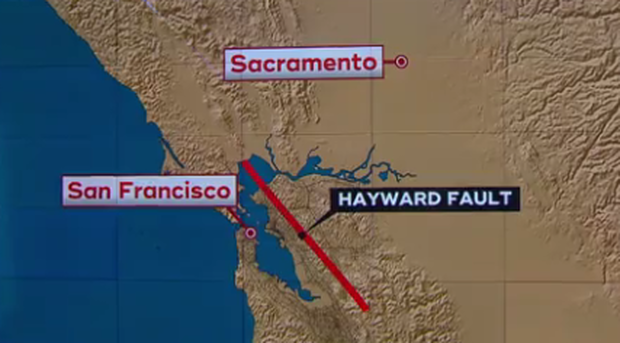It was one of the deadliest disasters ever to the hit the U.S. On April 18, 1906, the great San Francisco earthquake killed more than 3,000 and destroyed half the city. As bad as it was, and as bad as subsequent earthquakes have been, the Bay Area is now bracing for something even worse.
“It’s coming,” said Dr. Ken Hudnut, with the U.S. Geological Survey (USGS). “It’s not if, it’s when.”
Hayward Fault Map

2 million people live directly on top of the Hayward Fault, including the cities of Oakland and Berkeley
CBS News
A new report from the USGS says the biggest danger may be the Hayward Fault, because 2 million people live directly on top of it, including the cities of Oakland and Berkeley. The Hayward Fault could unleash a magnitude 7.0 earthquake, capable of catastrophic damage. That includes more than 800 deaths, 18,000 injuries and with gas lines severed and water popes broken, hundreds of fires could ignite, burning at least 50,000 homes.
“Those staggering numbers are not unchangeable, we can change the outcome,” said Dr. Hudnut. “We can save lives and reduce risk by taking action now.”
Hudnet says cities haven’t ignored the threat. Thousands of buildings have been retrofitted. When UC Berkeley learned that the fault ran right underneath it’s football stadium, the school installed seismic blocks, and completely rebuilt most of the stands.
The biggest jolt may be that despite what’s come before, the next “big one” could happen much sooner than later. The last major quake on the Hayward Fault happened 150 years ago. On average, a major quake happens every 150 years.
© 2018 CBS Interactive Inc. All Rights Reserved.
